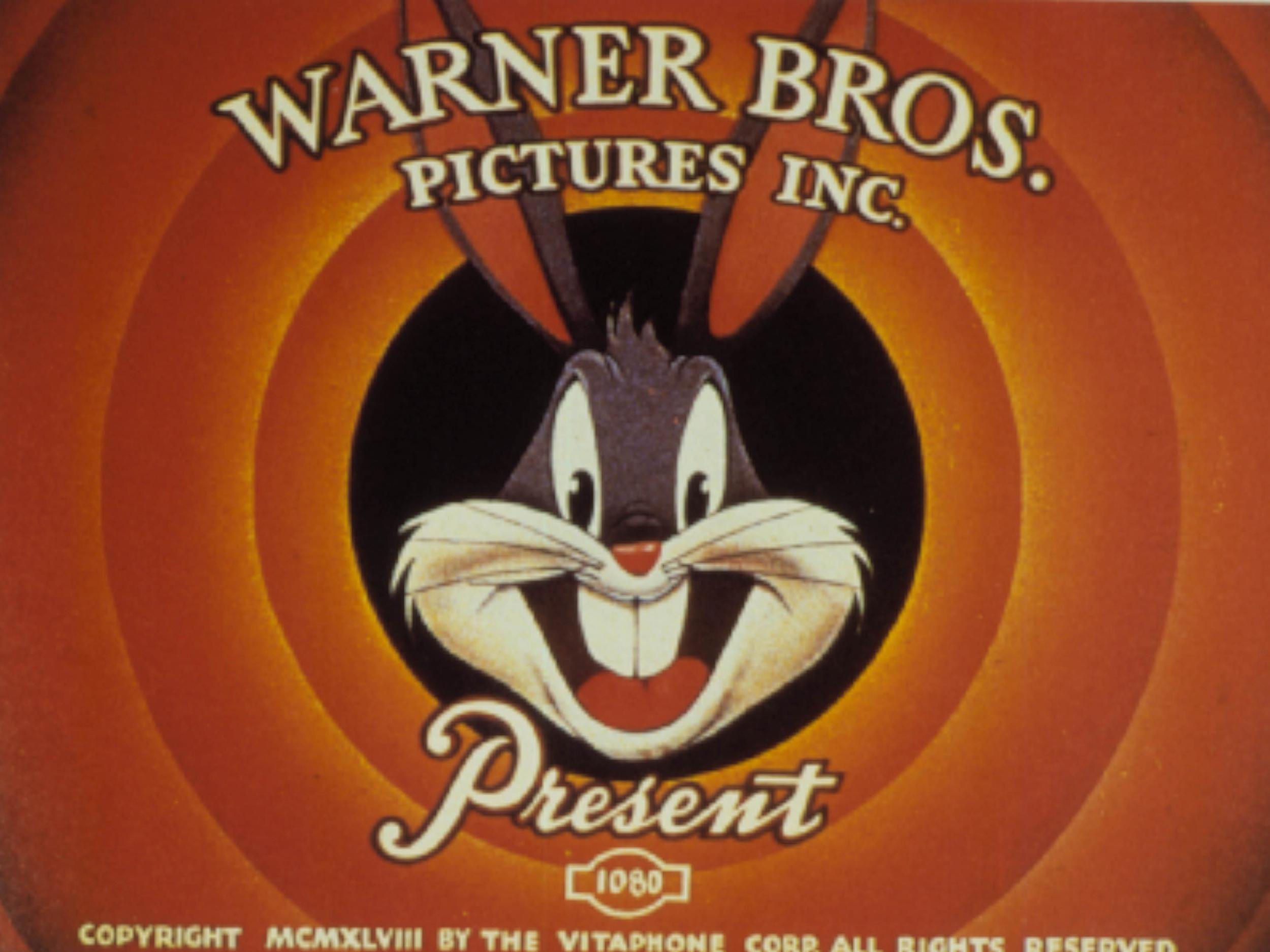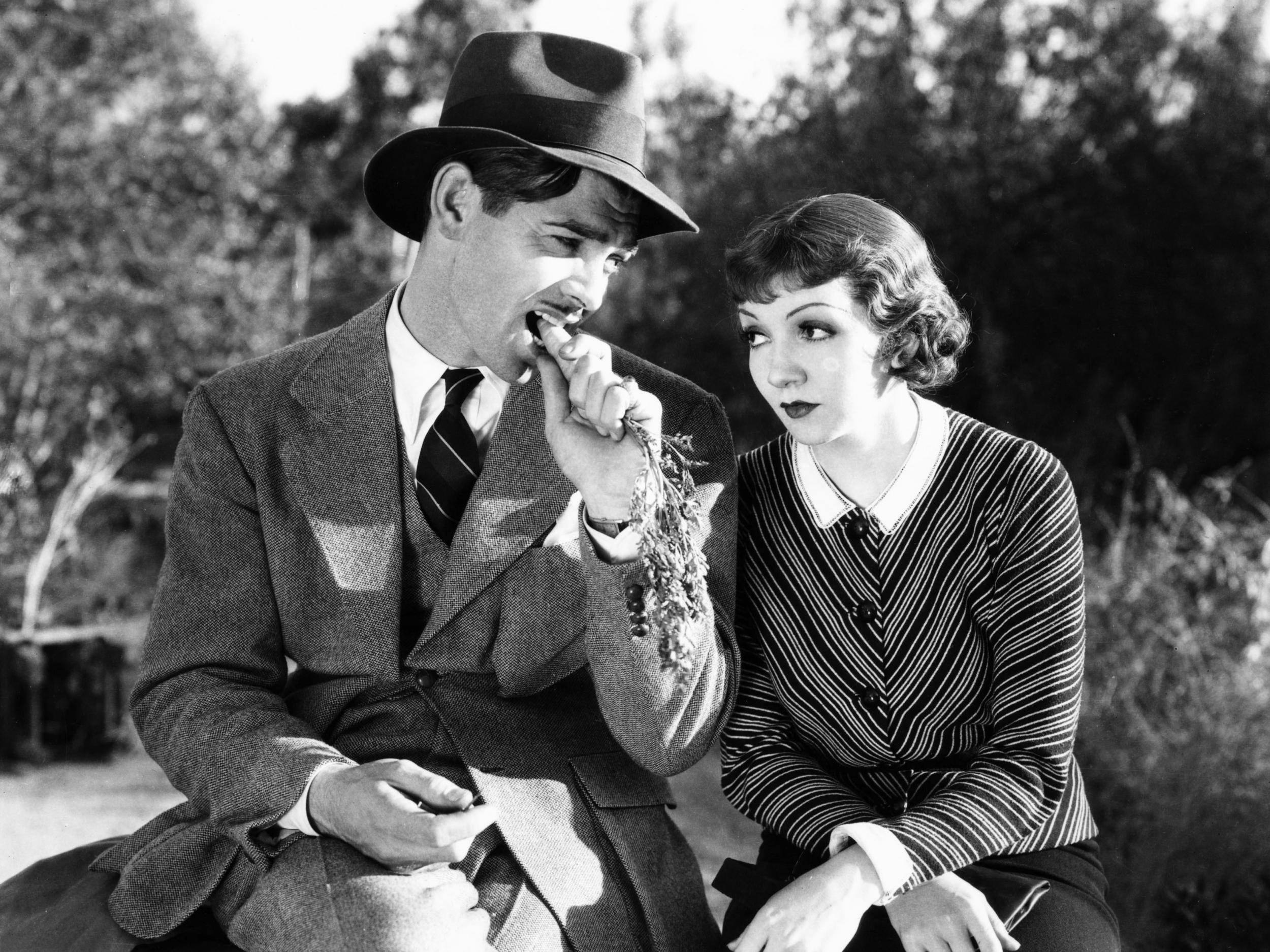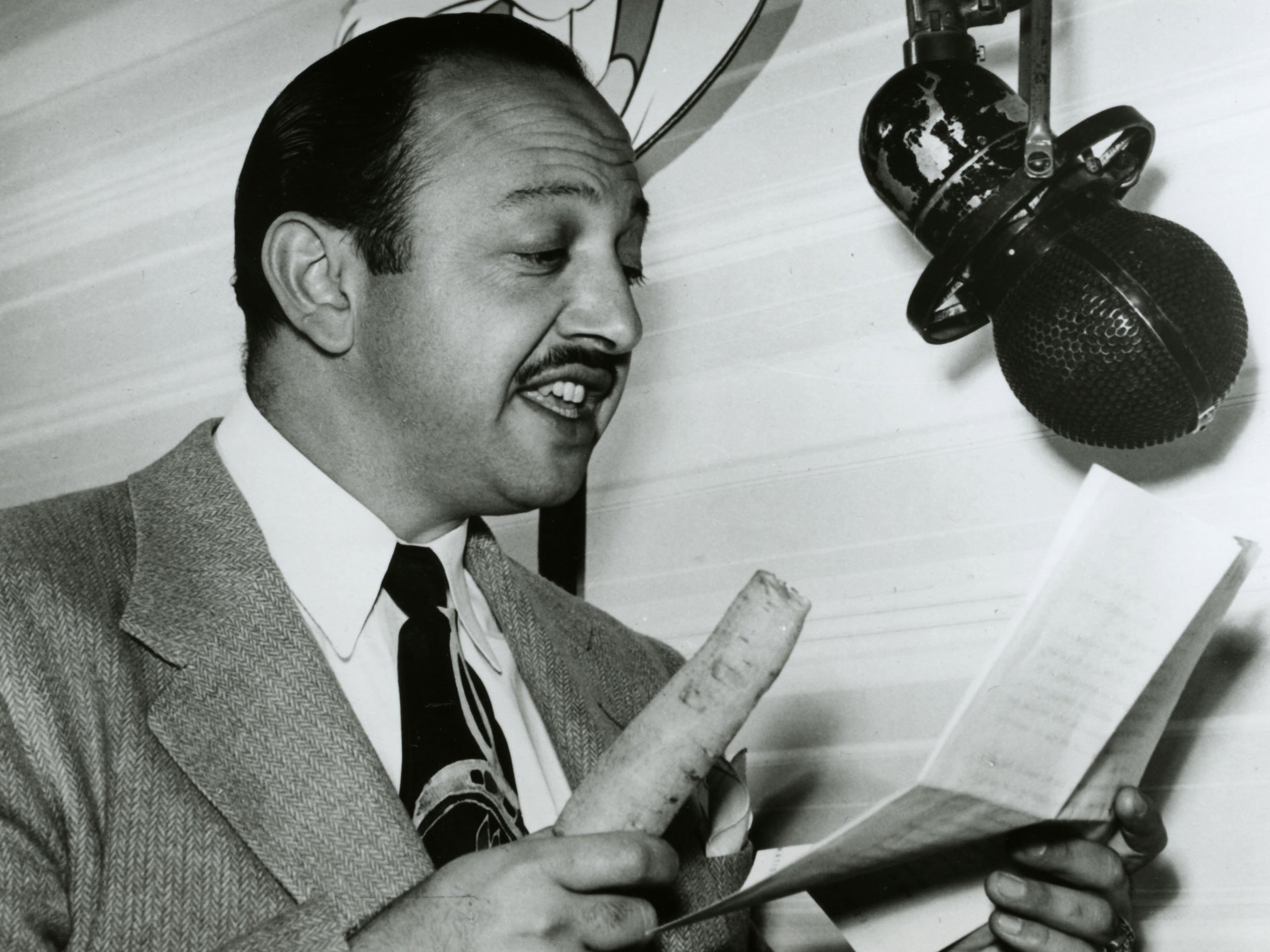Bugs Bunny at 80: How Warner Brothers' wisecracking 'wabbit' whipped Hermann Goring at the height of the Second World War
Ageless cartoon hero, who celebrates eight decades in show business on Monday, took on an enemy far greater than Elmer Fudd when he landed himself in the Black Forest in 1945
Bugs Bunny, Warner Brothers’ beloved carrot-chomping mascot, turned 80 on Monday.
His screen debut, in Porky’s Hare Hunt, was first shown on 30 April 1938, an episode directed by Ben Hardaway, whose own nickname would give the character his moniker.
Hunted by Porky Pig, this early incarnation of Bugs was then known as “Happy Rabbit” but already voiced by the great Mel Blanc, sounding more like Woody Woodpecker than the streetwise Brooklynite Bugs would later become.
He didn’t yet stand upright and was a more wildly anarchic presence than he would later be, leaving his shotgun-wielding pursuer in hospital with a broken leg after blowing him up with dynamite at the instalment’s close.
The idea of a wiley hare goes back at least as far as Aesop and Bugs would quickly evolve, through the subtle tweaking of Chuck Jones and others, into the woodland city slicker we know and love.

Tex Avery’s 1940 cartoon A Wild Hare is commonly credited as his first fully-formed appearance.
Producer Leon Schlesinger’s team of animators on the Looney Tunes and Merrie Melodies series (1930-69) took inspiration from a number of familiar big screen sources for the character’s persona.
The perpetually unimpressed, laconic cool of Humphrey Bogart was one, the cigar-punctuated quipping of Groucho Marx another (Bugs regularly repeats Groucho’s line from the 1933 satire Duck Soup: “Of course you realise, this means war.”).
Most important was the spectacle of Clark Gable’s motormouth reporter Peter Warne munching carrots by the roadside while hitchhiking in Frank Capra’s classic Depression-era comedy It Happened One Night (1934).

Like Warne, Bugs enjoys a hobo’s freedom, revelling in his lack of responsibility and finding wry amusement in those who take themselves too seriously.
Pursued by the likes of Elmer Fudd, Yosemite Sam and Marvin the Martian, Bugs has defied them all for eight decades, an ageless phenomenon who remains popular with kids today.

Watch Apple TV+ free for 7 day
New subscribers only. £9.99/mo. after free trial. Plan auto-renews until cancelled.
ADVERTISEMENT. If you sign up to this service we will earn commission. This revenue helps to fund journalism across The Independent.

Watch Apple TV+ free for 7 day
New subscribers only. £9.99/mo. after free trial. Plan auto-renews until cancelled.
ADVERTISEMENT. If you sign up to this service we will earn commission. This revenue helps to fund journalism across The Independent.
One of his most surprising antagonists was Reichsmarschall Hermann Göring, Adolf Hitler’s feared deputy, whom Bugs made a fool of in the 1945 Merrie Melodies cartoon Herr Meets Hare, directed by Friz Freleng.

Accidentally burrowing to “Joimany” en route to Las Vegas having failed to take a left turn at Albuquerque, Bugs finds himself in the Black Forest where he meets Göring out hunting in lederhosen, tellingly adorned with military medals.
Bugs outfoxes Göring by disguising himself as the Führer, speaking in the comedy cod-German Charlie Chaplin employed as Adenoid Hynkel in The Great Dictator (1940), and again as Brunhilde on horseback in a brilliant parody of Wagner’s Der Ring des Nibelungen, a set-piece that would be revisited in the classic What’s Opera Doc? 12 years later.
The rabbit is finally snared in a sack by the hunter and presented to Hitler, playing solitaire alone at his desk while Fortress Europe crumbles, whereupon Bugs emerges dressed as Joseph Stalin to frighten them off.
A lovely sketch, the piece was a semi-sequel to the 1944 Bugs Bunny Nips the Nips, since suppressed for its racist portrayal of Japanese soldiers, in which Bugs washes up in a crate from the Pacific and does battle with Hideki Tojo’s forces, including a sumo wrestler.
It might seem odd to have involved children’s cartoon characters in the Second World War but the practice was common at the time.
Walt Disney dispatched Donald Duck to the front in animations like the Spike Jones-inspired Der Fuehrer’s Face (1943) and Commando Duck (1944), notably holding back his prized asset, Mickey Mouse.
Paramount’s Famous Studios had Popeye roll up his sleeves and take the fight to the enemy in You’re A Sap, Mr Jap, Seein’ Red, White ‘N’ Blue and Spinach for Britain (1942-45).
While cartoons might have provided a service in their existing form as a welcome escapism from the horror of current events, embroiling their well-loved protagonists in war played a vital role in boosting Allied morale.
In fearlessly mocking the dictators then bestriding the world stage, puncturing their ballooning pomposity, the likes of Bugs, Donald and Popeye reassured the public that they had nothing to fear from such delusional tyrants.
Hollywood was integral to keeping ordinary Americans informed and entertained throughout the war, dispatching its best directors to shoot newsreel footage and making light of so serious a moment by repurposing the screwball comedy genre of the 1930s in pictures like Once Upon a Honeymoon, To Be or Not to Be (both 1942) and Hail the Conquering Hero (1944).
In You’ll Never Get Rich (1941), even Fred Astaire went to war.
Bugs Bunny was part of this proud tradition and Herr Meets Hare is unquestionably one of his finest outings.
The character remains a beloved American creation and was given a new lease of life in 1996 when he and his fellow Looney Tunes alumni appeared in the live-action/animation hybrid Space Jam opposite NBA giant Michael Jordan, a project suggested by the success of Who Framed Roger Rabbit? (1988).
“What’s up Doc?”
Join our commenting forum
Join thought-provoking conversations, follow other Independent readers and see their replies
Comments